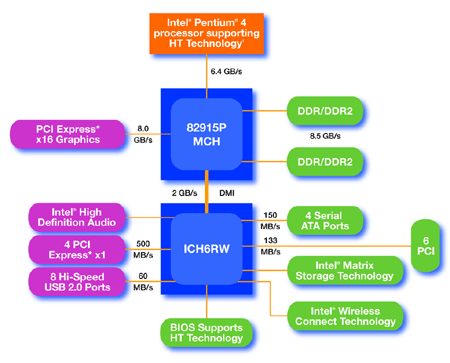915P Chipset Roundup: ABIT AG8, ASUS P5GD2 Premium, and Foxconn 915A01-P
915P Chipset Roundup: ABIT AG8, ASUS P5GD2 Premium, and Foxconn 915A01-P
Some of us love lusting after the finer things in life: a Mercedes-Benz SLR, Akoya pearls, Beluga caviar, and Clos du Mesnil champagne. While Intel's 925X chipset doesn't exactly fit in with those other high-end luxuries, it does happen to sit atop a long list of distinguished core logic products, offering the latest in technology and a fair dose of performance (even if it doesn't fly above and beyond the 875P it replaces).
Unfortunately, when it comes time to pay the bills, reality is more along the lines of a Honda Civic, McDonald's, a six pack (if you're old enough), and Ritz crackers. If you're finding the latest round of 925X motherboards (characterized by Gigabyte's GA-8ANXP-D, a nearly $300 brute) too rich for your blood, consider a board that feature's Intel's 915P chipset. Not only is the 915P almost every bit as fast, but it also boasts the same new technologies and works with the same ICH6 controller hub.
One of the 915P's best attributes is that it functions well in almost any environment. Because it's still so fast, 915P lends itself to high-end boards packed with features and top-heavy price tags. Or, it makes a great mainstream platform in the hands of a cost-conscious manufacturer. Even stripped down for value, the chipset is still a solid performer.
|
|
|
The 915P and 925X chipsets are similar in a number of ways. To begin, they both enable a PCI Express x16 graphics slot from their respective Memory Controller Hubs for 4GBps of bi-directional bandwidth. They also communicate with Intel's Pentium 4 processor on an 800MHz frontside bus and the ICH6 over a brand-new interconnect called DMI, or Direct Media Interface, that offers 2GB per second. Finally, each chipset supports DDR2 memory technology, which fits into 240-pin slots and is consequently not backwards-compatible with standard DDR.

The two chipsets differ in a couple of areas, as well. To begin, 915P is unique in that it supports DDR memory in addition to DDR2. So, motherboard manufacturers are free to use DDR2 slots exclusively, DDR exclusively, or a mix of the two. Naturally, only one memory technology can be used at a time, and bandwidth will fluctuate depending on the route you choose, but it's nice to have that sort of freedom on a mainstream platform.
The 925X distinguishes itself by featuring tighter memory timings, which is one reason why the 915P is considered a more mainstream offering. The resulting change in performance isn't phenomenal, making the 915P that much more attractive. It's enough to command a price premium, though, as 925X motherboards are much more expensive.
Another important point that hasn't yet received much attention is support for EMT64, the name of Intel's 64-bit extension technology, which is essentially similar to the AMD64 initiative. Intel's documentation currently claims that EMT64 is only supported on the 925X. If that's indeed the case, and there is no way to add the feature with a BIOS tweak, mainstream users might find themselves out of luck once Microsoft unveils its Windows XP 64-bit Edition. Intel's Dan Snyder confirms that 925X is currently the only validated workstation platform with support for the Pentium 4 featuring EMT64. Whether the 915P will eventually incorporate the technology remains to be seen.






